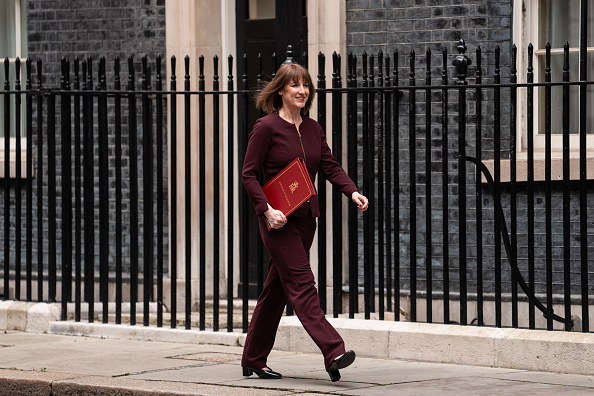Red Bull and Ford are building a new F1 hybrid race car engine—first as bits, then atoms
To get from 0 to 60 in Formula 1 engine design while competing against organizations with much more experience, Red Bull Ford Powertrains will need extra help (and, no, that boost won’t come in the form of a certain energy drink). The Red Bull-Ford collaborative venture is turning to the cloud by leaning on its software-giant sponsor’s Oracle Cloud Infrastructure. “We avoided the need to build a new data center,” says Matt Cadieux, CIO of Oracle Red Bull Racing, the parent firm of Powertrains. “It allowed us to get started pretty much immediately.” That puts this F1 organization in a different lane from other automotive companies that have long employed digital-twin technology to design engines and fine-tune their operation and maintenance, but have relied on in-house computing resources for that work. Cadieux calls simulating an engine design’s performance “a massive, massive computational problem” and credits recent advances in rapid cloud scalability for making it possible to run those simulations off-premise: “Five years ago, to scale up to the number we needed to run would have been very challenging.” F1 builders like Powertrains—the team is a part of Red Bull Technology based at that offshoot’s Milton Keynes, U.K., campus—also occupy an entirely different road from the consumer automotive industry. Their work is a tightly circumscribed practice, with specifications for vehicles and engines drawn up years in advance by the sport’s governing body, the Fédération Internationale de l’Automobile. “It is frustrating, but it’s also an opportunity to be creative, to find ways to be smarter than our competitors,” Cadieux says of FIA’s detailed specifications—which didn’t let teams put a 2026-compliant engine in a car on a test track in 2025, instead confining them to running prototype engines on dynamometer test rigs. The part of FIA’s 2026 regulations covering engines—”power units” in its terminology—mandates hybrid designs with an even split between battery-electric power and internal combustion of sustainable fuels. The organization says the latter “will be created from a combination of nonfood bio sources, genuine waste sources, or carbon extracted from the air.” (Race-vehicle emissions made up less than 1% of FIA’s carbon footprint as calculated in its 2023 impact report, with event logistics accounting for 49% and business travel 29%; FIA has other initiatives addressing those sources, such as deploying biofuel-powered trucks. The report does not assess the carbon pollution of spectators’ travel to races.) Six organizations are building engines compliant with these specifications: Alpine (affiliated with Renault); Audi; Ferrari; Honda; Mercedes; and Red Bull Ford Powertrains. The latter is the second-newest entrant after Audi; Red Bull Powertrains dates to 2021, when Red Bull stepped in after Honda’s decision to withdraw from F1 after the current design-spec cycle. Honda has continued building existing designs without Powertrains’ oversight—Red Bull driver Max Verstappen rode to his latest F1 championship in November in a Honda-powered car—but Ford is taking Honda’s place as the auto-industry partner for 2026 onwards. “What we’re doing now is developing the ’26 engine in a virtual world,” he says. “You need to have confidence that the results that are coming out of the simulation are enough to make an expensive prototype.” His advice based on that experience so far: “Fail early at bad concepts, and then invest in the promising ones.” Ford, in turn, stands to gain what Cadieux calls “some knock-on benefits” from this work at wringing maximum performance out of hybrid engines. Those simulations and their eventual results involve tradeoffs between performance, efficiency and reliability—but in the F1 context, that last attribute comes with complications that don’t show up in regular garages. As in, the “grid penalties” assessed on teams that replace too many powertrain components over the season, which force drivers to start a race farther back. “It is quite punitive,” Cadieux says of the penalty regime. “So having a reliable engine is really key to avoid having grid penalties.” But sometimes, it’s better to take a grid-penalty hit sooner rather than blow up an engine that isn’t built to last through the entire season anyway: “Your engine’s marginal, and at what race do you take the penalty to minimize the damage?” Powertrains has also been putting Oracle’s cloud computing to work simulating race tactics—“how you operate, how many pit stops, how hard do you push the car,” Cadieux explains. To that end, the team runs simulations in the cloud of such in-race scenarios as an accident on the track or degrading performance over laps from an engine, followed by possible responses to them. “If a real event happens, you’ve got a head start on what’s probabilistically the ideal course of action to take,” Cadieux says. His discussion of Formula One rac

To get from 0 to 60 in Formula 1 engine design while competing against organizations with much more experience, Red Bull Ford Powertrains will need extra help (and, no, that boost won’t come in the form of a certain energy drink).
The Red Bull-Ford collaborative venture is turning to the cloud by leaning on its software-giant sponsor’s Oracle Cloud Infrastructure.
“We avoided the need to build a new data center,” says Matt Cadieux, CIO of Oracle Red Bull Racing, the parent firm of Powertrains. “It allowed us to get started pretty much immediately.”
That puts this F1 organization in a different lane from other automotive companies that have long employed digital-twin technology to design engines and fine-tune their operation and maintenance, but have relied on in-house computing resources for that work.
Cadieux calls simulating an engine design’s performance “a massive, massive computational problem” and credits recent advances in rapid cloud scalability for making it possible to run those simulations off-premise: “Five years ago, to scale up to the number we needed to run would have been very challenging.”
F1 builders like Powertrains—the team is a part of Red Bull Technology based at that offshoot’s Milton Keynes, U.K., campus—also occupy an entirely different road from the consumer automotive industry. Their work is a tightly circumscribed practice, with specifications for vehicles and engines drawn up years in advance by the sport’s governing body, the Fédération Internationale de l’Automobile.
“It is frustrating, but it’s also an opportunity to be creative, to find ways to be smarter than our competitors,” Cadieux says of FIA’s detailed specifications—which didn’t let teams put a 2026-compliant engine in a car on a test track in 2025, instead confining them to running prototype engines on dynamometer test rigs.
The part of FIA’s 2026 regulations covering engines—”power units” in its terminology—mandates hybrid designs with an even split between battery-electric power and internal combustion of sustainable fuels. The organization says the latter “will be created from a combination of nonfood bio sources, genuine waste sources, or carbon extracted from the air.”
(Race-vehicle emissions made up less than 1% of FIA’s carbon footprint as calculated in its 2023 impact report, with event logistics accounting for 49% and business travel 29%; FIA has other initiatives addressing those sources, such as deploying biofuel-powered trucks. The report does not assess the carbon pollution of spectators’ travel to races.)
Six organizations are building engines compliant with these specifications: Alpine (affiliated with Renault); Audi; Ferrari; Honda; Mercedes; and Red Bull Ford Powertrains.
The latter is the second-newest entrant after Audi; Red Bull Powertrains dates to 2021, when Red Bull stepped in after Honda’s decision to withdraw from F1 after the current design-spec cycle.
Honda has continued building existing designs without Powertrains’ oversight—Red Bull driver Max Verstappen rode to his latest F1 championship in November in a Honda-powered car—but Ford is taking Honda’s place as the auto-industry partner for 2026 onwards.
“What we’re doing now is developing the ’26 engine in a virtual world,” he says. “You need to have confidence that the results that are coming out of the simulation are enough to make an expensive prototype.”
His advice based on that experience so far: “Fail early at bad concepts, and then invest in the promising ones.”
Ford, in turn, stands to gain what Cadieux calls “some knock-on benefits” from this work at wringing maximum performance out of hybrid engines.
Those simulations and their eventual results involve tradeoffs between performance, efficiency and reliability—but in the F1 context, that last attribute comes with complications that don’t show up in regular garages.
As in, the “grid penalties” assessed on teams that replace too many powertrain components over the season, which force drivers to start a race farther back.
“It is quite punitive,” Cadieux says of the penalty regime. “So having a reliable engine is really key to avoid having grid penalties.”
But sometimes, it’s better to take a grid-penalty hit sooner rather than blow up an engine that isn’t built to last through the entire season anyway: “Your engine’s marginal, and at what race do you take the penalty to minimize the damage?”
Powertrains has also been putting Oracle’s cloud computing to work simulating race tactics—“how you operate, how many pit stops, how hard do you push the car,” Cadieux explains.
To that end, the team runs simulations in the cloud of such in-race scenarios as an accident on the track or degrading performance over laps from an engine, followed by possible responses to them.
“If a real event happens, you’ve got a head start on what’s probabilistically the ideal course of action to take,” Cadieux says.
His discussion of Formula One racing as a data-driven exercise can make it seem like a dry engineering proposition. But he also emphasizes how it centers on a human in exceedingly cramped confines making snap decisions while playing in the fastest of traffic.
“You’re asking the driver to push to the limits of what the car’s able to do and what their body is able to do,” Cadieux says. “They need to fundamentally trust the machine to do that.”






















